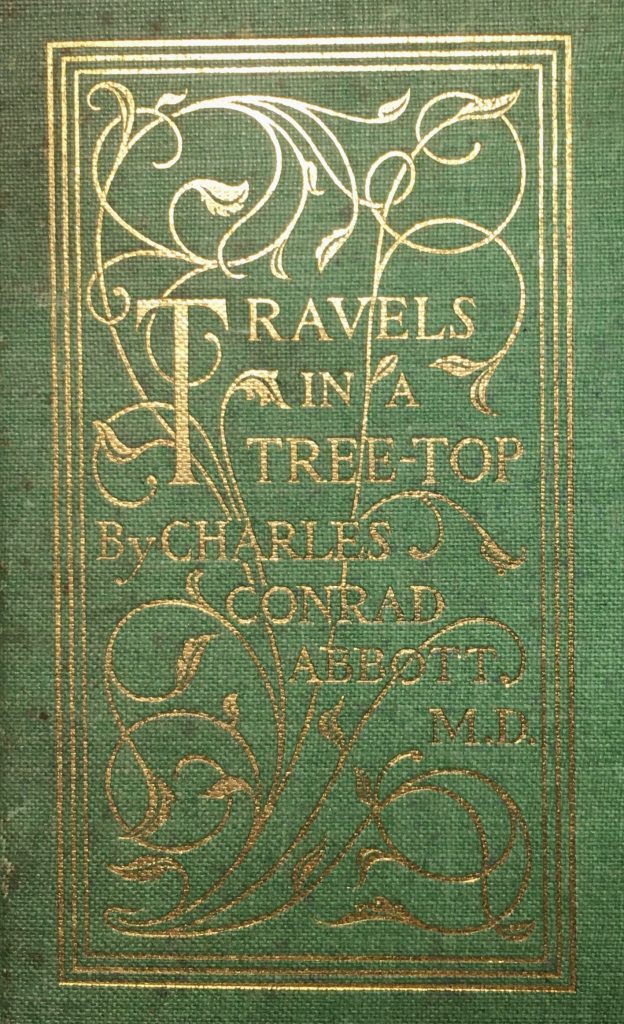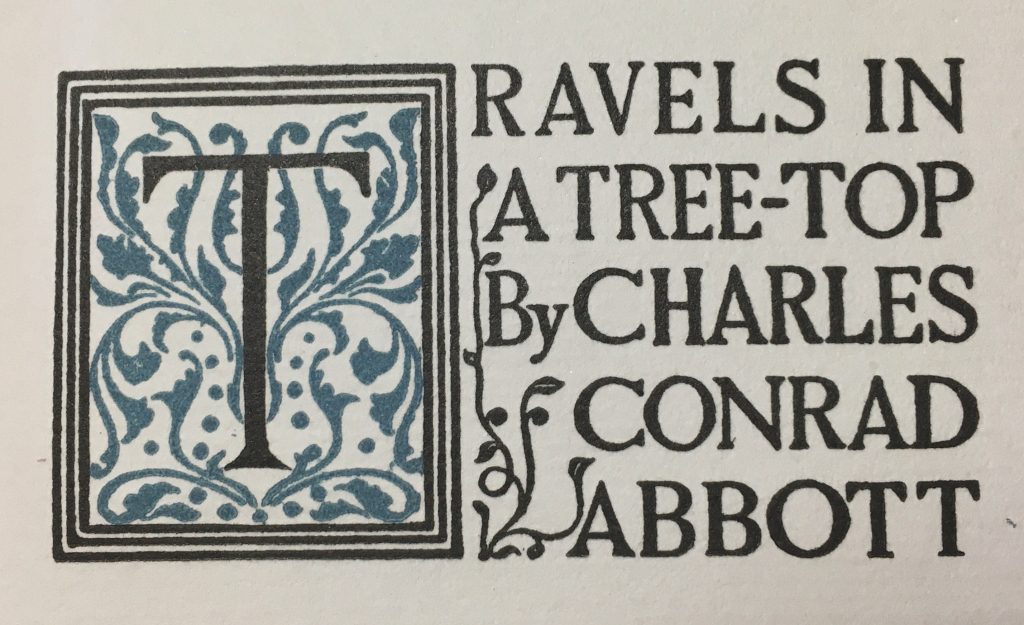
How seldom do we see the coral honeysuckle, and how generally the trumpet-creeper has given place to exotic vines of far more striking bloom, but, as will appear, of less utility! If the old-time vines that I have mentioned bore less showy flowers, they had at least the merit of attracting hummingbirds, that so grandly rounded out our complement of summer birds. These feathered fairies are not difficult to see, although so small, and, if so inclined, we can always study them to great advantage. They become quite tame, and in the old-fashioned gardens were always a prominent feature by reason of their numbers. They are not forever on the wing, and when preening their feathers let the sunshine fall upon them, and we have emeralds and rubies that cost nothing, but are none the less valuable because of this. In changing the botanical features of our yard we have had but one thought, gorgeous flowers; but was it wise to give no heed to the loss of birds as a result? I fancy there are many who would turn with delight from formal clusters of unfamiliar shrubs, however showy, to a gooseberry hedge or a lilac thicket with song-sparrows and a cat-bird hidden in its shade. We have been unwise in this too radical change. We have abolished bird-music in our eagerness for color, gaining a little, but losing more. We have paid too dear, not for a whistle, but for its loss. But it is not too late. Carry a little of the home forest to our yards, and birds will follow it.
THERE IS NOTHING REMARKABLE IN THE ABOVE PASSAGE, UNTIL ONE REALIZES THAT IT WAS WRITTEN IN 1894. That places it almost a hundred years ahead of any other writing advocating gardening with native plants that I have ever read. Perhaps this sentiment was commonplace at the time, and then forgotten completely. But I suspect that Abbott was relatively unusual in observing the tendency of native birds to pollinate native flowers, and realize the implications of planting nonnative plants in our yards. Not surprisingly given the fascination with birds at the time, Abbott focuses here on the impact on ruby-throated hummingbirds. I suspect that the insect pollinators — bumblebees, butterflies, and their kin — were so abundant then that it was not necessary to go out of one’s way to make a flower garden a suitable habitat for them. But at least there is the clear connection between our garden choices and benefits (or harm) to local species. It was a start.
ON THE WHOLE, “TRAVELS IN A TREE-TOP” WAS A PLEASANT BUT UNREMARKABLE READ. I enjoyed returning to the upland and meadows of Abbott’s farm, “Three Beeches”, in the tidal Delaware Valley just south of Trenton, New Jersey. Unlike the previous book, this one did not ramble in the geographical sense — nearly all of his essays (mostly brief ones) took place on his property, and the few exceptions were nearby in New Jersey. This time, he included some essays reminiscing about his rural boyhood, and also a few making reference to his archaeological work (both prehistoric and colonial American sites). For instance, in this passage, Abbott writes about the overgrown ruin of a colonial warehouse, almost entirely returned to nature. While he observes the birds and trees of 1894, he also imagines the time when the warehouse was a busy center of colonial commerce:
Up the creek with many a turn and twist, and now on a grassy knoll we land again, where a wonderful spring pours a great volume of sparkling water into the creek…. An obscure backcountry creek now, but less than two centuries ago the scene of busy industry. Perhaps no one is now living who saw the last sail that whitened the landscape. Pages of old ledgers, a bit of diary, and old deeds tell us something of the place; but the grassy knoll itself give no hint of the fact that upon it once stood a warehouse. Yet a busy place it was in early colonial times, and now utterly neglected.
It is difficult to realize how very unsubstantial is much of man’s work. As we sat upon the grassy slope, watching the outgoing tide as it rippled and broke in a long line of sparkling bubbles, I rebuilt, for the moment, the projecting wharf, of which but a single log remains, and had the quaint shallops of pre-Revolutionary time riding at anchor. There were heard, in fact, the cry of a heron and the wild scream of a hawk; but these, in fancy, were the hum of human voices and the tramp of busy feet.
The scattered stones that just peeped above the grass were not chance bowlders rolled from the hill nearby, but door-step and foundation of the one-time warehouse. The days of buying, selling, and getting gain come back, in fancy, and I was more the sturdy colonist than the effeminate descendant. But has the present no merit? We had the summer breeze that came freighted with the odors gathered from the forest and the stream, and there were thrushes rejoicing in our hearing that the hill-sides were again as Nature made them.
His fascination for evidence of the past extended to geology, as well. Here he ponders the ancient landscape evoked by fossilized footprints:
Difficult as fossil footprints may be to decipher, they call up with wonderful distinctiveness the long ago of other geologic ages. It is hard to realize that the stone of which our houses are built once formed the tide-washed shore of a primeval river or the bed of a lake or ocean gone long before man came upon the scene.
I will close this scattered collection of brief scenes with one from the opening essay in the book, conventently entitled Travels in a Tree-top. It seems fitting, after all, to include at least one scene in which the author observed his domain from a treetop on the property. Here, he looks out over the marshland along the shoreline of the Delaware River:
The meadows are such a comprehensive place that no one knows where to begin, if the attempt is made to enumerate their features. There is such a blending of dry land and wet, open and thicket-grown, hedge and brook and scattered trees, that it is bewildering if you do not choose some one point for close inspection. From the tree-top I overlook it all, and try in vain to determine whether the azure strip of flowering iris or the flaunting crimson of the Turk’s cap lilies is the prettier. Beyond, in damper soil, the glistening yellow of the sunflowers is really too bright to be beautiful; but not so where the water is hidden by the huge circular leaves of the lotus. They are majestic as well as pretty, and the sparse bloom, yellow and rosy pink, is even more conspicuous by reason of its background. How well the birds know the wild meadow tracts! They have not forsaken my tree and its surroundings, but for one here I see a dozen there. Mere inky specks, as seen from my point of view, but I know them as marsh-wrens and swamp-sparrows, kingbird and red-wings, that will soon form those enormous flocks that form so marked a feature to the autumn landscape. It needs no field-glass to mark down the passing herons that, coming from the river-shore, take a noontide rest in the overgrown marsh.

MY COPY OF THIS BOOK WAS BOUND IN KELLY GREEN CLOTH, AND GILT WITH THE TITLE IN AN ORNAMENTAL FRAME. The title on the title page was likewise decorated in a manner evocative of a medieval illuminated manuscript; in keeping with the motif, the copyright date on the title page was in Roman numerals: MDCCCXCIV. I might add that the paper the book was printed on is of exceptional quality ( sturdy bond with watermarked parallel lines). Alas, it is without illustrations. On the inside cover is a gift inscription: “Mary dear, from Mother and daddy / Christmas 1934”. I assume the parents obtained the book in a used bookstore. Unfortunately, there is no other writing anywhere in the volume, so I can say little else about its past.